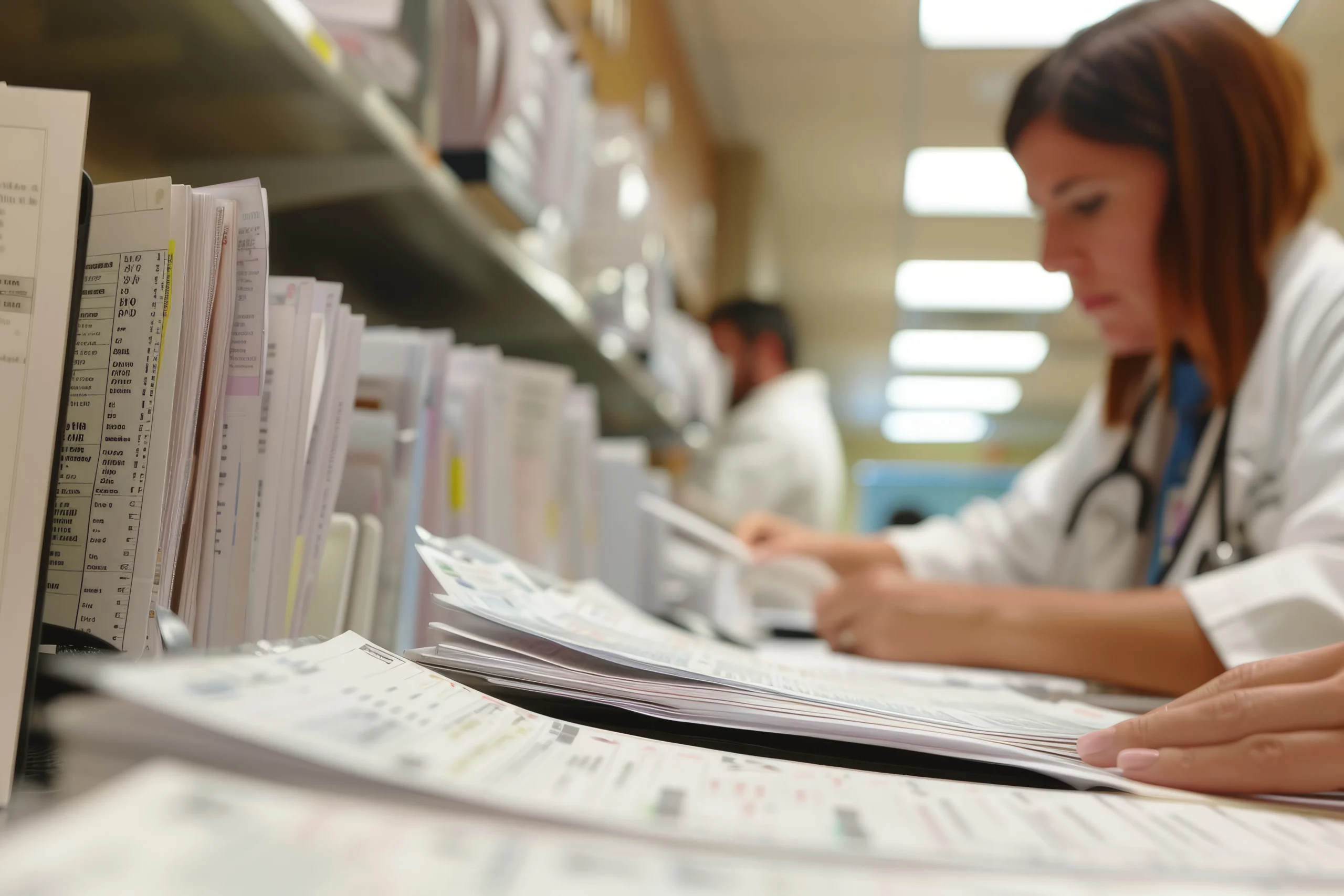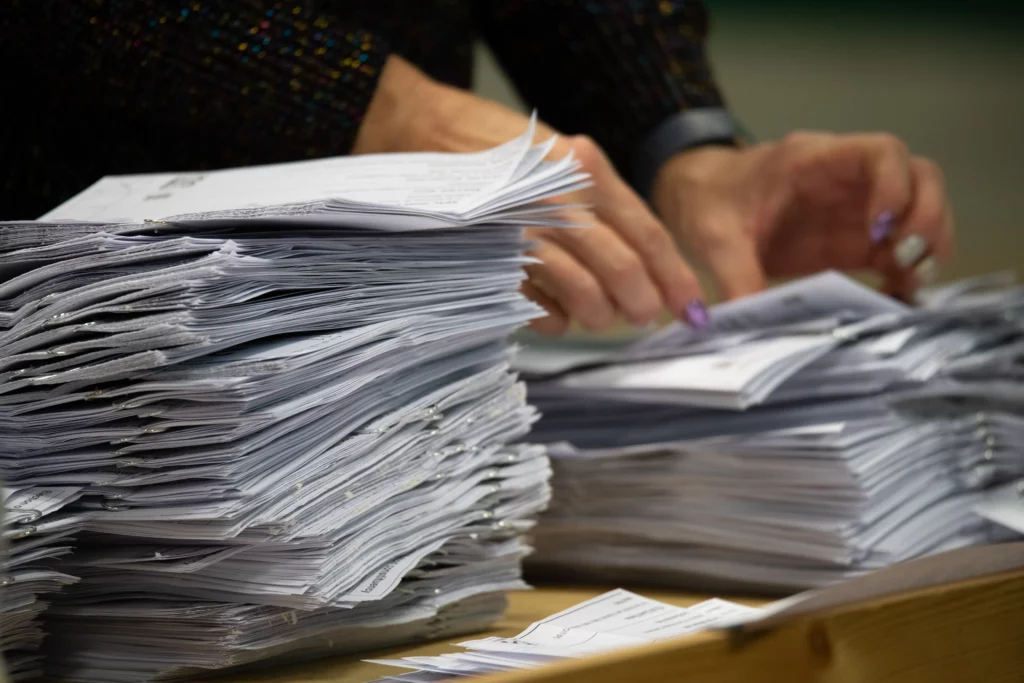
X‑ray films can’t just be thrown out in the trash. They contain sensitive patient information and a valuable (but potentially harmful) metal, silver, so they need a secure, compliant, and environmentally responsible route from start to finish.
Below, we explain how to dispose of old X‑rays properly, how recycling works, and what to expect from a specialist provider like Restore Datashred.
How to dispose of old X‑ray films?
The safest, simplest option is to use an accredited data‑destruction and recycling service. Your provider will collect sealed X‑ray films, destroy the patient data so it’s unreadable and unrecoverable, and then send the film for specialist silver recovery and plastics recycling. You’ll receive a Certificate of Destruction to close the loop for audits. This route supports compliance with UK GDPR and the Data Protection Act 2018 and prevents potentially harmful materials from ending up in landfill
The quick version (step‑by‑step)
- Book a secure collection for your boxed or bagged X‑rays. A trained team supplies sealed containers (or uses yours), logs what’s collected, and secures the load for transport in a GPS‑tracked vehicle.
- Data is destroyed, so the images cannot be reconstructed. Films are processed so the emulsion layer is removed or shredded, making the medical images unreadable and unrecoverable before any recycling takes place.
- Silver is recovered using specialist techniques (a very high percentage can be reclaimed). The extracted silver is refined and returned to manufacturing, turning a potential pollutant into a reusable raw material.
- The remaining plastic base is recycled where possible. The PET substrate is routed into appropriate recycling streams; any non‑recyclable fractions are handled responsibly in line with environmental regulations.
You receive a Certificate of Destruction as legal proof of secure and responsible disposal. Records are stored digitally, so you can retrieve paperwork quickly for audits and inspections.

How do you recycle old X‑rays?
Firstly, work with a specialist who can destroy the images and then recycle what’s left. First, the films are processed so the X-rays can’t be seen again. After that, the silver is safely recovered for reuse, and the plastic film is recycled wherever possible. Putting privacy first – and recycling next – helps you meet your obligations and gives those materials a second life.
Restore Datashred takes care of secure x-ray disposal, recycling, and safe data destruction – with the right equipment, GPS-tracked vehicles, and years of experience.
Why X‑ray films require specialist handling

Every X‑ray image is protected like any other medical record. That means the images must be rendered unreadable and unrecoverable before recycling begins, no exceptions. This protects patients and keeps you squarely within UK GDPR and the Data Protection Act 2018.

X‑ray films use silver halide. Managed badly, this can contaminate the environment; handled properly, it’s a valuable resource that can be safely reclaimed and fed back into manufacturing. Responsible recycling is therefore both an environmental duty and a financial positive.

Modern processing can recover a very high percentage of the silver content. After that, the remaining plastic film base is often recyclable too, shrinking your waste footprint further.

A Certificate of Destruction isn’t just a nice‑to‑have: it’s your legal evidence that both the data and the physical films were handled securely and sustainably. Keep it with your retention and disposal records.
Disposing of old X‑rays: common scenarios




What to expect from a compliant provider
Secure handling from collection onward
Sealed containers, tamper‑evident closures, and trained personnel. Containers can be provided on request; vehicles are GPS‑tracked, and seal numbers are recorded at collection and drop‑off for a clear chain of custody.

Data destruction first, every time
Images are made unrecoverable before any recycling occurs, either via on‑site shredding or transfer to a secure facility, whichever suits your risk profile and space.

Specialist silver recovery
After the image layer is separated, silver is refined for reuse, and any residues are handled under strict environmental controls.


Recycling of the film base
Where compatible, PET plastics are routed into appropriate recycling streams to reduce waste; any non‑recyclable fractions are dealt with responsibly.

Clear documentation
A Certificate of Destruction confirming secure and responsible disposal, plus Duty of Care paperwork from licensed waste carriers where applicable. Records are easy to retrieve ahead of audits.

Ready to recycle your X‑ray films?
Restore Datashred offers a complete solution for safe and responsible X‑ray film disposal. From secure pick‑ups and image destruction to silver recovery and recycling, every step is handled by trained experts with full paperwork for your peace of mind. If your organisation needs to clear old films securely and sustainably, explore our services or reach out to us and get a quote.
Get a Quote Customer Login
Customer Login


